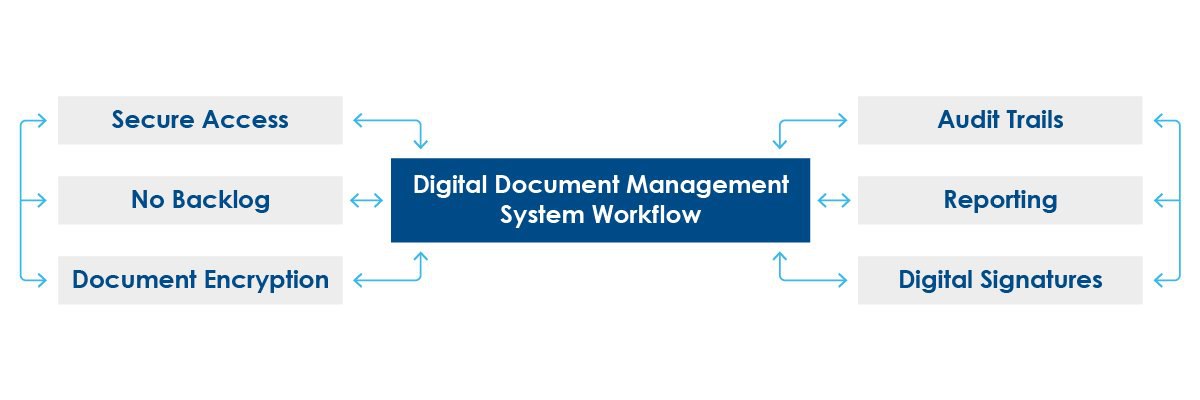Document Management Systems: 6 Reasons Your Business Needs One
Document Management | Workflow Automation

Every business leaves a paper trail. Filing cabinets once worked as the backbone of record-keeping, but in today’s hybrid work environments they’re inefficient, insecure, and unable to keep up with modern demands.
A Document Management System (DMS) changes that. By digitizing and automating how your organization captures, stores, secures, and shares information, a DMS helps your team work smarter, faster, and more securely.
This article breaks down six reasons why your business should consider implementing a Document Management System—and how it can streamline workflows, protect sensitive information, and improve overall efficiency.
1. Streamline Workflows & Boost Productivity
Manual processes waste valuable time and increase the risk of costly errors. A DMS automates repetitive tasks, ensures approvals move forward without bottlenecks, and integrates with scanning solutions like uniFLOW or Papercut for seamless digitization.
Some systems even use AI-powered tools to classify documents and extract key details automatically, saving employees from repetitive data entry and reducing human error.
2. Simplify Storage & Retrieval
Scattered files across emails, desktops, and shared drives make finding documents frustrating and time-consuming. A DMS centralizes everything in one secure, searchable platform.
Employees can retrieve files instantly from any device with the proper login credentials. At the same time, administrators can control who has access to certain documents, helping maintain compliance and security. Built-in audit trails add accountability by logging activity around sensitive information.
3. Eliminate Process Backlogs
High-volume environments often run into delays caused by manual filing, scanning, or sharing. With a DMS, multiple employees can access, edit, and process documents at the same time without slowing each other down.
By digitizing these workflows, you can accelerate turnaround times for both employees and clients, keeping business moving forward.
4. Strengthen Security & Compliance
Security is one of the top reasons businesses adopt a DMS. With features like encryption, role-based permissions, and classification rules, sensitive information is safeguarded from unauthorized access.
Audit trails provide visibility into who viewed, modified, or shared a document, helping organizations maintain compliance and reducing risks tied to regulatory requirements.
5. Gain Reporting & Oversight Capabilities
A DMS provides more than just storage, it delivers insights. Reporting features allow managers to track document usage and user activity in real time.
From simple administrative reports to customizable analytics, these tools help identify inefficiencies, monitor compliance, and support data-driven decision-making. Reports can also be exported for extended analysis and long-term planning.
6. Digitize Forms & Signatures
Paper-based forms and signatures slow down business processes. With a DMS, you can build digital forms for both internal and external use, collect supporting documentation, and automatically trigger workflows once submitted.
Digital signatures add another layer of efficiency and trust by ensuring authenticity and preventing tampering. Unlike electronic signatures, which are often attached to forms or contracts, digital signatures use encryption and private keys to provide stronger security. Both can be stored and managed within your DMS.

Is a Document Management System the Right Choice for Your Business?
After reviewing the reasons above, the advantages of implementing a Document Management System are clear. From boosting productivity and collaboration to improving compliance and security, a DMS helps your company operate more efficiently in today’s fast-paced, hybrid work environment.
Digitizing your information and using an easy-to-use platform not only saves money but also optimizes your resources safely and effectively.
At LDI Connect, we can help you implement a Document Management System tailored to your business needs and provide hands-on support to improve your team’s workflow. Speak with an LDI Connect expert today about your document management challenges, and we’ll be happy to point you in the right direction.